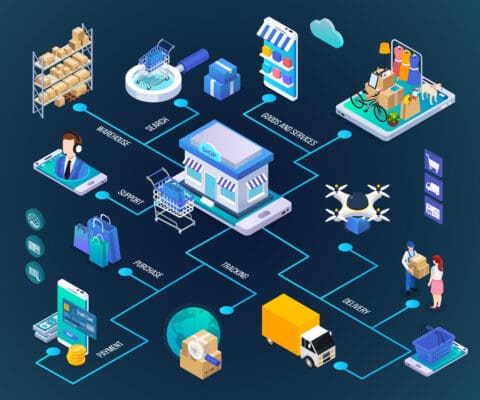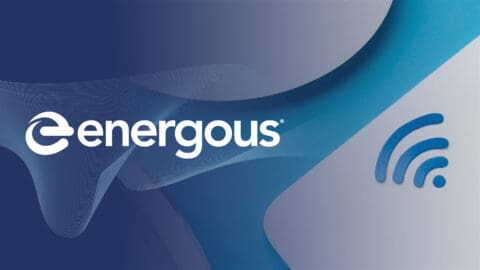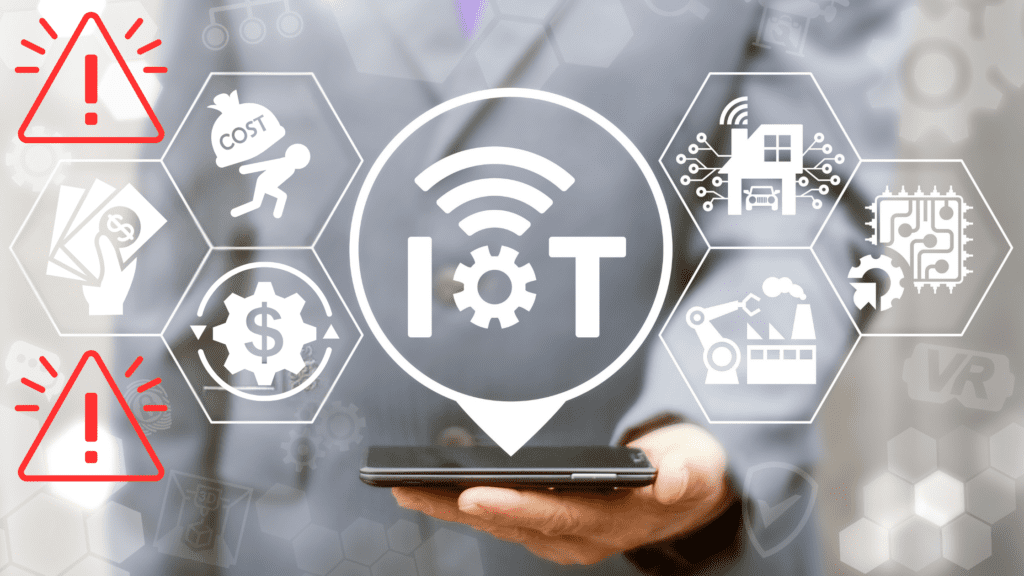The Internet of Things (IoT) is revolutionizing business by enabling smarter, more efficient operations through connected devices. In retail, IoT sensors can monitor inventory levels in real time, automatically triggering restocks to avoid shortages and reduce waste, while asset tracking capabilities ensure all inventory is kept track of along the way. Similarly, logistics companies can leverage IoT applications to track the location and condition of goods throughout the supply chain, ensuring transparency and minimizing disruptions. But while IoT opens a world of possibilities, it also comes with hidden costs—most notably in infrastructure and ongoing maintenance.
The Infrastructure Requirements of IoT Technologies
A typical IoT setup involves a complex network of sensors, gateways, servers, and power sources, all designed to ensure seamless communication between devices. These sensors are strategically placed depending on the application—on machinery in industrial facilities, along supply chains for logistics, inside retail shelves, or embedded in medical devices. Their primary role is to collect data and relay it through gateways to cloud systems for analysis.
The types of data these sensors track vary widely based on their purpose. For instance, temperature sensors monitor environmental conditions to ensure compliance in cold storage or food safety applications. Asset tracking sensors in logistics capture location, movement, and handling data to prevent losses or delays. Similarly, sensors in retail can track inventory levels, while industrial sensors monitor equipment health by detecting vibrations, pressure, or operational anomalies. This constant stream of data enables organizations to make real-time decisions, optimize performance, and address potential issues before they escalate.
The more extensive the IoT deployment, the more complex the needs for this underlying infrastructure. Large warehouses, industrial facilities, or fleets may require hundreds or even thousands of sensors and numerous gateways to provide comprehensive coverage. Installing this infrastructure not only involves high initial costs but also long deployment times, often taking months to complete.
This kind of investment isn’t a one-time affair. Many of the devices become obsolete within a few years, driving up costs. For example, battery-powered sensors often require replacement every three to five years, depending on their energy usage and the frequency of manual intervention required for recharging or swapping batteries. Similarly, communication gateways may need upgrades as network protocols evolve or as businesses scale IoT deployments. This not only contributes to operational costs but also raises concerns about the environmental impact of disposing large volumes of depleted batteries.
With more stringent regulations upcoming like the European Union’s Batteries Regulation (2023/1542), which enforces stricter measures on battery production, usage, and recycling, a transition to battery-free infrastructure would deliver significant benefits.
Maintenance: The Ongoing Challenge
Maintenance is another major cost factor in implementing IoT setups. Battery-powered devices, while convenient, will inevitably require frequent replacements or recharges. Sensors used for monitoring temperatures, tracking assets, or measuring environmental conditions must be serviced by teams regularly as their batteries deplete. Other IoT components such as gateways and communication modules also demand ongoing maintenance, whether it’s firmware updates, hardware replacements, or ensuring proper connectivity. These routine requirements, especially in large-scale deployments, can strain operational resources and create hidden costs that impact efficiency and budgets. may need servicing as their batteries run low.
Businesses with widespread IoT deployments must dedicate significant resources to managing their networks, ensuring every sensor, gateway, and data point remains functional. A study by ITIC found that 90% of firms experience hourly downtime costs exceeding $300,000, with 41% reporting costs between $1 million to over $5 million per hour. Such downtime results in substantial losses of critical data, disrupts operations, and creates bottlenecks. The need for ongoing maintenance, combined with infrastructure investments, can make traditional IoT systems expensive to operate in the long term.
A Shift Toward Simplification
As the demand for IoT grows, more companies are searching for solutions that simplify their operational infrastructure and reduce maintenance burdens. Enter wireless power networks (WPNs) and battery-free devices. These emerging technologies allow continuous power delivery without physical charging or battery swaps while also streamlining data transmission using Bluetooth Low Energy (BLE). By using RF energy or other forms of wireless power transfer, IoT systems can keep devices operational with little to no human intervention.
Energous: A Low-Infrastructure, Low-Maintenance Solution
Energous’ wireless power network (WPN) solutions provide an innovative solution that significantly reduces both infrastructure and maintenance requirements. Instead of relying on complex wiring or battery-powered sensors like traditional IoT systems, Energous solutions uses radio waves to wirelessly power devices, while BLE enables continuous data communication, ensuring critical information is transmitted 24/7.
By enabling the elimination of traditional batteries altogether, Energous’ solutions help businesses align with new environmental regulations while achieving cost efficiency.
Visit https://energous.com/contact/ to schedule a demo today!

Wireless Power: Revolutionizing The Manufacturing Sector
The company is growing its wireless energy solution to power BLE tags with new certification for use in Japan, and has teamed up with InnoTractor and Thinaer.

Unlocking the Future with Energous’ Radio Frequency Wireless Charging
Energous advances RF wireless charging, offering versatile and cost-effective power solutions that redefine efficiency and convenience in various sectors from healthcare to IoT.

About Energous
Pushing the boundaries of power, Energous leads the way in wireless power solutions. With over 200 patents, 30+ PoCs, and regulatory certification in 114 countries, Energous leverages its global expertise to deliver cutting-edge technology for IoT markets. Energous solutions enable efficient over-the-air power transmission as well as data transmission over


